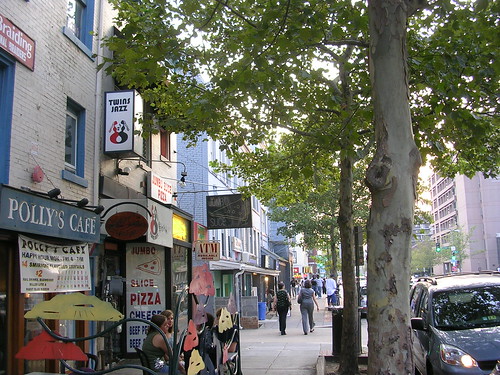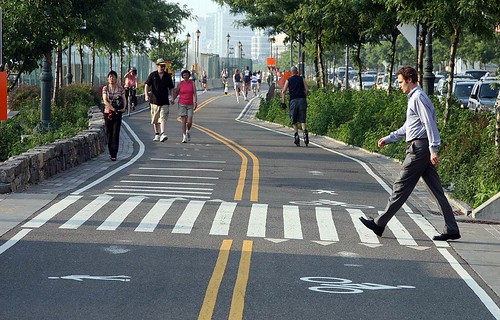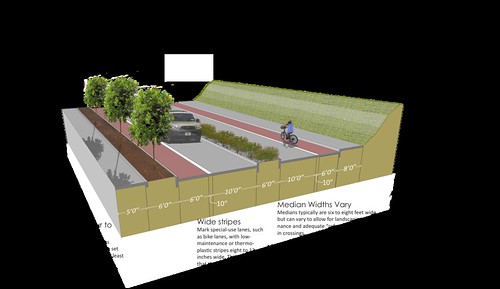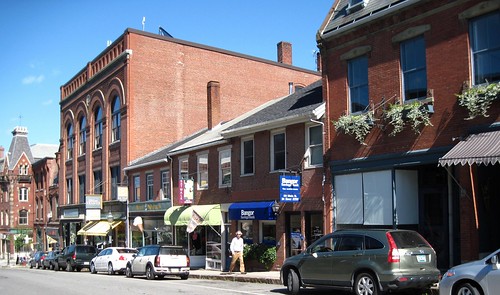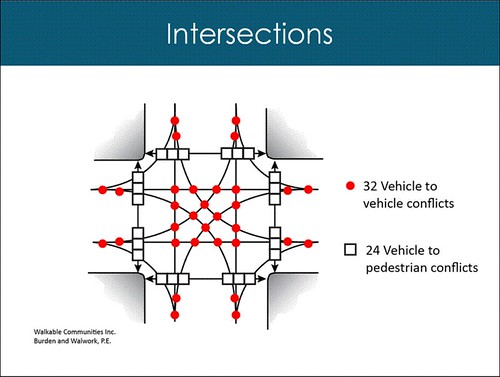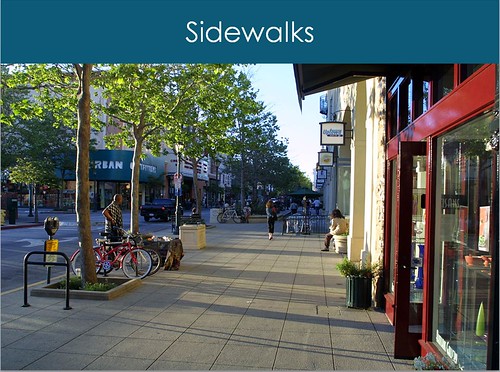How communities can support walkability and be recognized for it

Posted September 10, 2012 at 1:25PM
I recently came across two fantastic resources for making communities more walkable. One is a program, the other a compendium of highly useful educational and technical information. They come from the Pedestrian and Bicycle Information Center and the Walkable and Livable Communities Institute, respectively.
First, the program: last week the Pedestrian and Bicycle Information Center announced that nine additional cities and towns, including my own Washington, DC, had qualified for recognition as “Walk Friendly Communities.” The PBIC is an organization administered by the University of North Carolina and supported by the federal Department of Transportation. The Walk Friendly Communities program is also supported by the FedEx Corporation.
This is, in my humble opinion, a really good program. I have to admit that I was a bit skeptical at first, concerned that cities and towns were being recognized in spite of not really being among the country’s most walkable, something pointed out to me by commenters when I reported on the first batch of recognized cities and towns last year. The complaints got a little louder when the article was republished on a different site with a headline that suggested the recognized communities were, in fact, the country’s most walkable.
But that’s not what the program is, really. It’s designed to encourage the adoption of policies and practices that move a community toward more walkability, even if those policies are forward-looking and not yet resulting in superior or improved performance. This time I read the criteria in detail, and they are very, very good.
Here are the communities that were recognized last week:
Gold Level
Silver Level
Bronze Level
The links for each will highlight some of the features that the Institute found laudable for the various communities. There are now 33 cities and towns that have earned the designation at one level or another, with Seattle the only one so far with the highest-level “platinum” rating.
The criteria are described in detail in a 47-page “community assessment tool” that applicants must use in order to be evaluated. Taken as a whole, the tool comprise a menu of audits and measures that can make a place, as the program’s name suggests, more friendly to walking.
Although the program is mostly forward-looking, the assessment tool does require applicants to provide some objective performance-based criteria, including the portion of commuting trips taken by walking according to Census data, as well as accident data involving pedestrians. It also includes some highly relevant questions to elicit objective data on some important factors that can influence walking, such as public transit availability and performance, sidewalk and street crossing presence and standards, and enforcement of traffic safety laws. I am impressed that the questions get appropriately very specific (what percentage of your population resides within a quarter mile of a transit stop and what are the headways and hours of operation? How many citations have been issued for failure to yield to pedestrians and for obstructing pathways? What percentage of arterial and other street mileage have sidewalks on both sides?). One objective measure that I particularly loved was a requirement that each applicant report the Walk Score and Transit Score for its city hall, along with the Walk Scores for the community as a whole and the top ten percent of its residents.
I was disappointed not to see any question relating to regulation and enforcement against texting or other device use while driving, though. I hope the Center adds that category, because the research shows it is just as dangerous as driving drunk and a serious hazard to walkers and other humans.
There are many questions in the tool related to planning, administration, and policies, including for things that research shows can make a big difference, such as standards for street connectivity and block sizes (making walking routes more efficient), measures to encourage mixed uses (things to walk to), form-based codes (appealing streetscape), and policies to shape parking placement (so buildings are easy to reach from the sidewalk) and encourage infill (reducing wasted space unappealing to walkers) and complete streets (accommodating all modes of travel, including walking). I was delighted to see a question concerning the presence of projects using LEED for Neighborhood Development, partly because LEED-ND has great walkability standards and partly (and perhaps selfishly) because I personally devoted so much time to creating that program.
There’s much more, including a section on programs to encourage walking to school and community car-free days on certain streets. There’s a section on engineering standards. The developers of Walk Friendly Communities did their homework and did it well. One can quibble with the precise wording of questions, maybe, or the depth for certain categories, but not much. One way or another, they hit the right factors.
Each criterion has a clearly stated rationale and references to research and sources of helpful additional information. The website suggests that merely using the tool to self-assess a community, regardless of whether an applicant applies for a certification, can be useful and I think they are right about that. (NRDC’s Citizen’s Guide to LEED-ND suggests the same use for that system.)
Unlike the LEED rating programs, there does not appear to be a formal scoring system. Walk Friendly Communities looks to be a sort of hybrid in between juried evaluations (such as EPA’s Smart Growth Awards or the Congress for the New Urbanism’s Charter awards) and formal, numerical scoring systems such as LEED. The website says only that “all sections will be scored” with points awarded “based on the number of questions in the section, the depth of information required in those questions, and the potential impact on walkability of the content addressed in each question.” And there are references to a “review panel” and “multiple reviewers.” So there’s apparently some subjectivity, which I do not think inappropriate.
Earlier this year, a highly complementary tool, Walkable 101: The Walkability Workbook, was published by the Walkable and Livable Communities Institute. The Workbook is a sort of compilation of the best guidance and materials that Dan Burden and his colleagues at the Institute have been developing and using for years in lectures and hands-on workshops with communities. Less a book than a comprehensive package, the publication contains everything a community might need to educate its constituency about walkability (including slide presentations and related notes), conduct a sophisticated walkability workshop, employ a “walking audit survey tool,” adopt appropriate design and engineering standards, and draw from a wealth of supporting information.
There’s a great deal of overlap (especially in mission) between these two resources, but they are not the same. While Walk Friendly Communities provides a rating recognition for a city or town that has demonstrated some progress and has adopted measures to facilitate and encourage walking, the Walkability Workbook provides detailed how-to guidance to get a community where it needs to be, including ready-to-use materials for education, advocacy, and assessment. While only municipalities can apply for a WFC rating, the Workbook is designed to be used also by local walkability champions and advocates seeking to educate and garner support for the kinds of measures that both publications encourage.
The Workbook materials also provide some excellent pictures and measurements to explain and implement the policies encouraged by the WFC rating system. Several of the images accompanying this post are from those materials.
The Workbook was developed by the Institute with assistance from AARP and financial support from the federal Environmental Protection Agency. It can be downloaded for free from the Institute’s site (but be forewarned that it’s an enormous file at over 220MB).
Related posts:
- How far will we walk to go somewhere? It depends. (July 30, 2012)
- How walkable, transit-oriented neighborhoods help seniors (June 5, 2012)
- Data summaries show walkable communities are good for our health, and for business, too (April 13, 2012)
- Walking is good for us. So why isn't it safer? (August 19, 2011)
- A dog's-eye view of what makes a walkable neighborhood (April 19, 2011)
- Want to walk to school? Laguna Beach says nope, not here (October 19, 2010)
- Walkability 101-A, by Roger Lewis (May 10, 2010)
- Kids’ perspective on safe walkability (February 18, 2010)
Move your cursor over the images for credit information.

